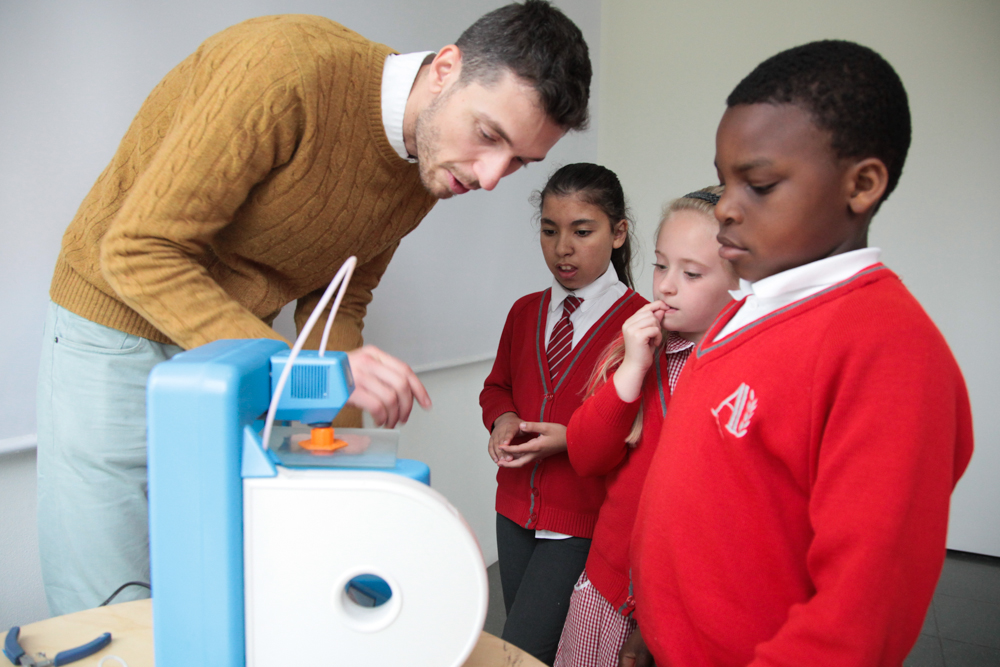
Curriculum Links
The Serpentine Gallery’s approach to education is based on a belief in the importance of teachers and students working in conversation with their local area and exploring ideas through collaboration. This is an alternative approach to the standard DfE guidance that focuses on individual accumulation of knowledge. Serpentine Education projects are research based and ask critical questions about the world we live in. This project foregrounds young people’s lived experience of their neighbourhoods as the starting point for rethinking the urban environment.
Sections in the Build Your Own Pavilion Teachers’ resources are based around questions that are to be used as starting points for group discussions and suggestions for practical activities. All sections can be expanded or edited according to your group’s needs and abilities. Students should be encouraged to devise their own questions and answers.
You can also use this resource to develop a project that links art, design and technology with geography and citizenship.
Please see below for some possible links to the national curriculum.
DESIGN & TECHNOLOGY LINKS
KS2
- Use research and develop design criteria to inform the design of innovative, functional, appealing products that are fit for purpose, aimed at particular individuals or groups
- Generate, develop, model and communicate their ideas through discussion, annotated sketches, prototypes, and computer-aided design
- Select from and use a wider range of tools and equipment to perform practical tasks accurately
- Select from and use a wider range of materials and components, including construction materials, textiles and ingredients, according to their functional properties and aesthetic qualities
- Evaluate their ideas and products against their own design criteria and consider the views of others to improve their work
- Apply their understanding of how to strengthen, stiffen and reinforce more complex structures
KS3
- Use research and exploration to identify and understand user needs
- Identify and solve their own design problems and understand how to reformulate problems given to them
- Develop specifications to inform the design of innovative, functional, appealing products that respond to needs in a variety of situations
- Develop and communicate design ideas using annotated sketches, detailed plans, 3-D modelling, oral and digital presentations and computer-based tools
- Select from and use specialist tools, techniques, processes, equipment and machinery precisely, including computer-aided manufacture
- Analyse the work of past and present professionals and others to develop and broaden their understanding
- Investigate new and emerging technologies
- Test, evaluate and refine their ideas and products against a specification, taking into account the views of intended users and other interested groups
- Understand and use the properties of materials and the performance of structural elements to achieve functioning solutions
ART & DESIGN LINKS
KS2
- Create sketch books to record their observations and use them to review and revisit ideas
- Improve their mastery of art and design techniques, including drawing and sculpture with a range of materials
- Find out about great architects in history
KS3
- Use a range of techniques to record their observations in sketchbooks, journals and other media as a basis for exploring their ideas
- Increase their proficiency in the handling of different materials
- Analyse and evaluate their own work, and that of others, in order to strengthen the visual impact or applications of their work
- Find out about present day architecture, including styles and movements
GEOGRAPHY
KS2 and KS3
- Describe and understand key aspects of physical geography (weather and climate, landscape features)
- Describe and understand key aspects of human geography (place, land use, social and economic activity, urbanisation, population, brownfield and greenfield sites, urban regeneration, global/local connections)
- Use fieldwork to observe, measure, record and present human and physical features in the local area using a range of methods including sketch maps, plans, graphs and digital technologies; use 8 points of a compass, 4/6-figure grid references, symbols and key
CITIZENSHIP LINKS
KS3
- Learn about the roles played by public institutions and voluntary groups in society, and the ways in which citizens work together to improve their communities, including opportunities to participate in school-based activities
KS4
- Learn about diverse national, regional, religious and ethnic identities in the United Kingdom and the need for mutual respect and understanding
- Learn about the different ways in which a citizen can contribute to the improvement of his or her community, to include the opportunity to participate actively in community volunteering, as well as other forms of responsible activity







